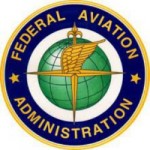The Drone Advisory Committee (DAC) held its second meeting on January 31 in Reno, NV. The DAC is an RTCA Federal Advisory Committee comprised of executives who represent a wide array of stakeholders including: unmanned aircraft manufacturers and operators, traditional aviation groups, labor organizations, radio and navigation equipment manufacturers, airport operators, state and local government officials, and academia.
During the meeting, the committee reviewed three draft tasking statements: (1) the roles and responsibilities of federal, state, and local governments in regulating and enforcing drone laws; (2) technological and regulatory mechanisms that would allow drone operators to gain access to the airspace beyond what the agency currently permits under the Small UAS Rule; and (3) funding to offset the cost of supporting unmanned aircraft integration into the nation’s airspace.
The DAC approved the first two task group statements with edits which have subsequently been finalized. The statements for Task Group 1 and Task Group 2 are available online.
The FAA received the DAC’s feedback on the third tasking statement and will finalize it over the coming weeks. The third tasking statement will be posted on RTCA’s website.
Federal Aviation Administration (FAA) Administrator Michael Huerta announced the creation of the DAC in May 2016. The committee provides an open venue for the FAA and stakeholders to work in partnership to identify and recommend a single, consensus-based set of resolutions for issues related to the safety and efficiency of integrating unmanned aircraft into the National Airspace System. It also provides the FAA with recommendations that may be used for tactical and strategic planning.
The next DAC meeting will be held on May 3 in Washington, DC. Information about the DAC, including meetings, is available on RTCA’s website.
Source: Press Release


Cory and I came up with a very simple idea that will skyrocket Drones acceptability in the community and go a long way towards resolving privacy issues. The idea is to have a standardized National flag that would be flown at the site where drones are being flown warning the public that they are in use. To further identify the flyers as certificate holding PICs set up a system where flags could not be issued without a valid Remote Pilot Certificate Number, maybe even printed on the edge of the flag. Coming into our first Spring Ag Season, Tall big bold flags would be a huge help to our crop duster brethren letting them know of our presence.
It is really tough to compete with hobbyists that do not operate with registration and credentials. I think it was a serious mistake that the FAA Regulations did not reque at least a minimum level of Liability insurance
Thanks.
Hague